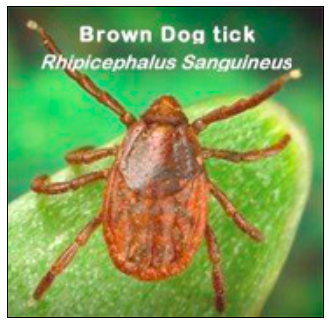On a topic that only metaphorically relates to politics, a Skagway woman was horrified last week to find a fully engorged tick on her dog’s face after they returned home from a hike.
They’d been hiking daily on the local trails this month, and everyone knows ticks don’t live in the grasses and woods of Southeast Alaska … Or do they?
They do. The woman destroyed the little bloodsucker.
This year, the Alaska Office of the State Veterinarian, in collaboration with the Department of Fish and Game, wants them, dead or alive.
The Alaska Submit-A-Tick Program is where you send the zip-locked-baggie vermin to if you find them on yourself, your pets or the guy sitting in front of you on the jet to Anchorage. Submit the specimen for species identification and pathogen testing. Veterinarians, biologists, and other Alaskans who handle domestic animals are especially valuable resources for getting these specimens submitted so the State Vet knows what he’s dealing with. But everyday hikers may help map the hot spots for the critter in Alaska.
“Researchers are asking Alaskans to submit ticks to help determine which tick species are currently in the state. Tick submissions will also help us learn more about how ticks are being imported into Alaska so that we can create effective strategies to limit their introduction. Ticks can transmit bacteria, parasites, and viruses that can cause diseases in humans and wildlife. Pathogen testing allows us to assess tickborne disease risk in the state,” according to the web page.
Dog, deer, and moose ticks aren’t native to Alaska, but they are now surviving the winters in some places. The one native species is usually found on squirrels, hares, voles, birds, cats, muskrats, and a few rodents. That tick can transmit tularemia, a serious bacterial disease.
The Alaska Department of Fish and Game last year issued a warning about an expected increase in Tularemia, which is most often diagnosed in hares and pets in Interior Alaska between Memorial Day and Labor Day, as hares and vole ticks are more active in the summer. Two species of dog ticks have become established in urban areas in Alaska and are capable of spreading the bacteria.
REMOVE THE TICK QUICKLY
Rather than using passed-down tick tricks from your grandfather, the current thinking is to remove the vermin quickly, rather than wait for them to detach. Use a fine-tip tweezer and grasp as close to the head (which will be embedded in the skin) as possible and pull straight out. No twisting or jerking — easy does it.
Then clean the area. If you don’t get the mouth parts out on the first try, then try to pull them out with the tweezer, and then keep the area clean and let it heal. Make sure to wash your the tweezer and your hands before and after handling the tick. Save the biting beast in a ziplock bag, preferably dead. Submit it for species identification and pathogen testing through the Alaska Submit-A-Tick Program:
Office of the State Veterinarian
5251 Dr. Martin Luther King Jr. Avenue
Anchorage, AK 99507
And if you develop symptoms after handling the tick, get to a doctor. Tularemia can be fatal. Lethary, swollen lymph nodes, and a high fever are signs you won’t want to ignore. Learn more here.
(Now, isn’t it time to go do a pet scan?)

if you have rubber gloves use those before attempting to pull out the tick
You headline is kinda misleading,,,, I thought you were talking about politicians from California.
If you notice a rash that smooth and maybe a low grade fever get to the doctor quickly tell thim you want to be tested for rockey Mt. Spotted tick fever. If it comes back negative wait about 2 to 3 days have it done again. I had a negative result I went 5 1/2 months untreated liked to have died doxycycline antibiotics is the only treatment I had to take 42 day of doxycycline. It does not cure it put it in remission if not treated can be fatal in 7 to 8 days don’t play around with it it was the sickest I have ever been. Best thing to do is resurch the Web so many different systems. The first doctor I went to that I got the negative test put me on 6 doxycycline that’s the only thing that saved me. Got the tick bite in Arkansas.